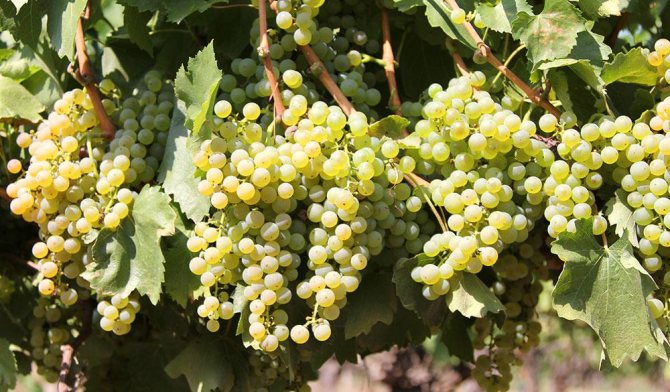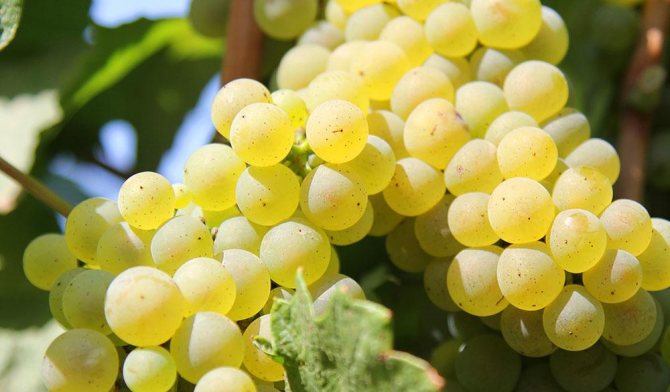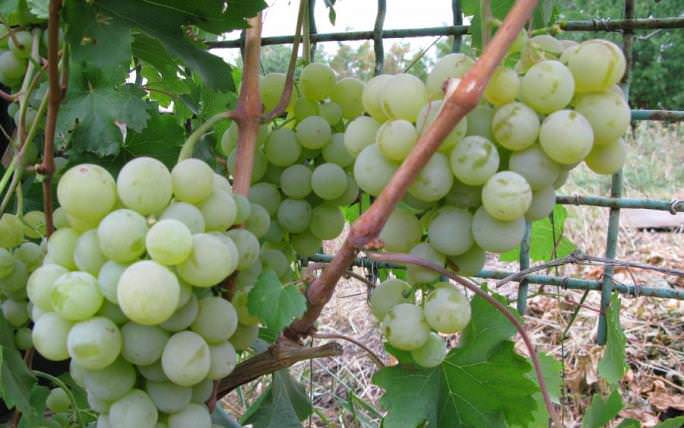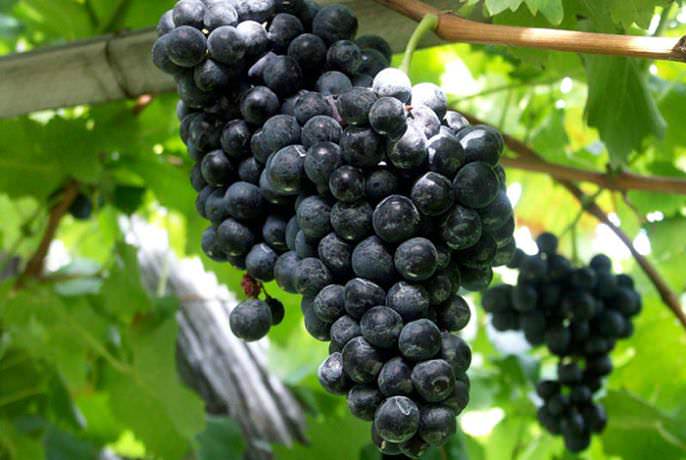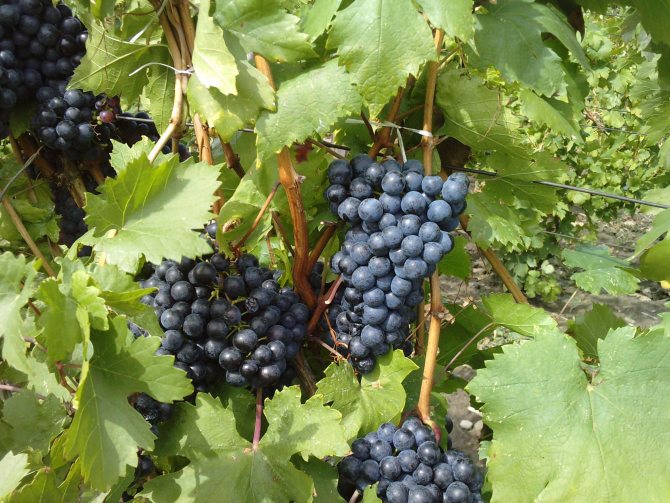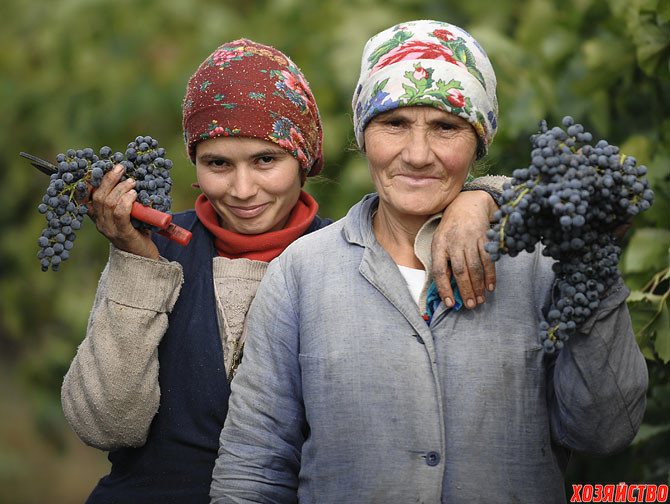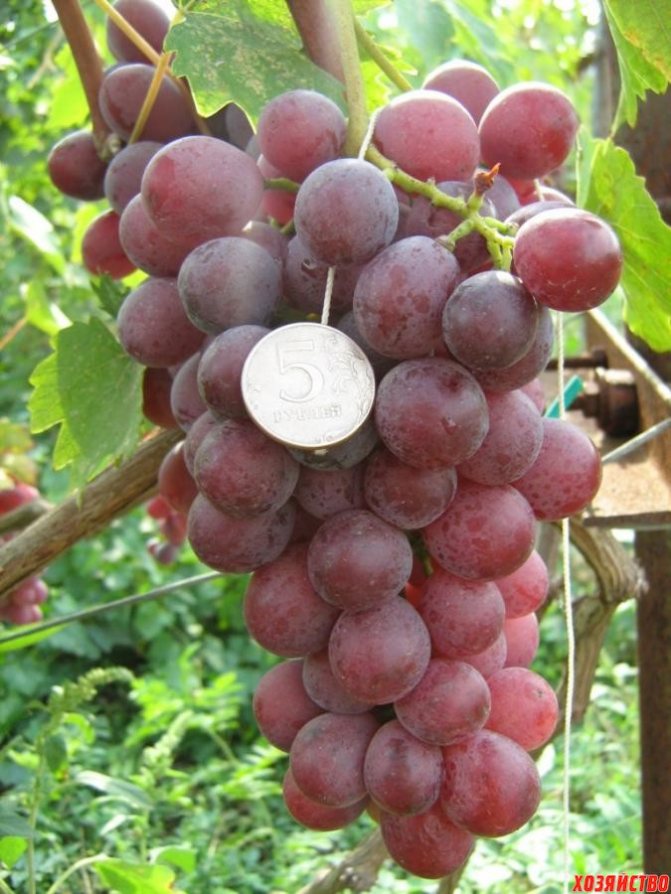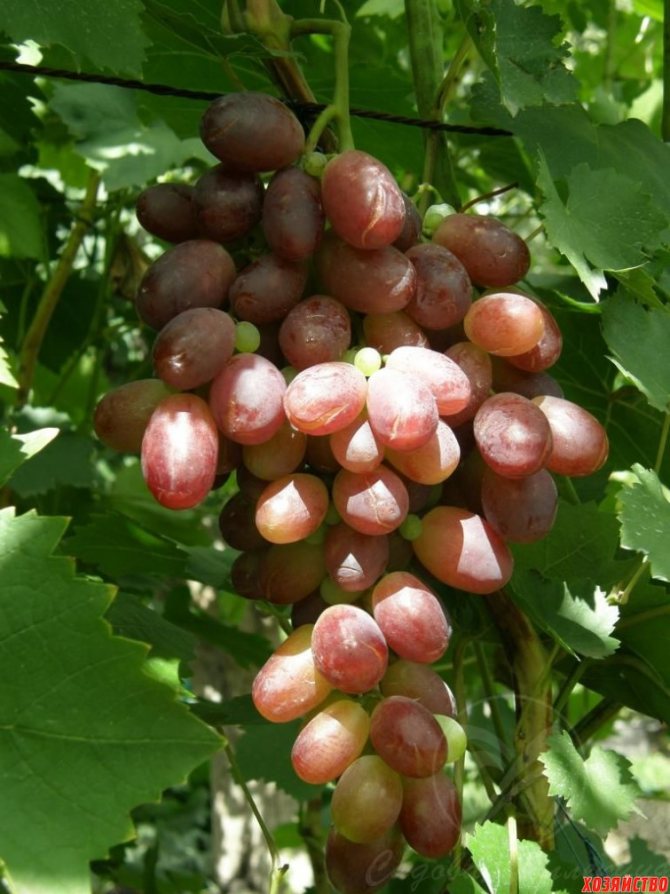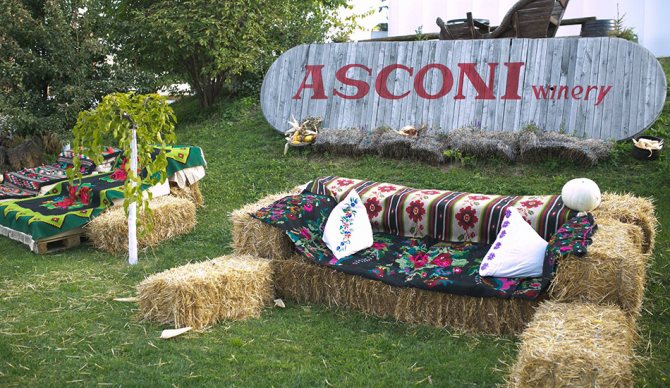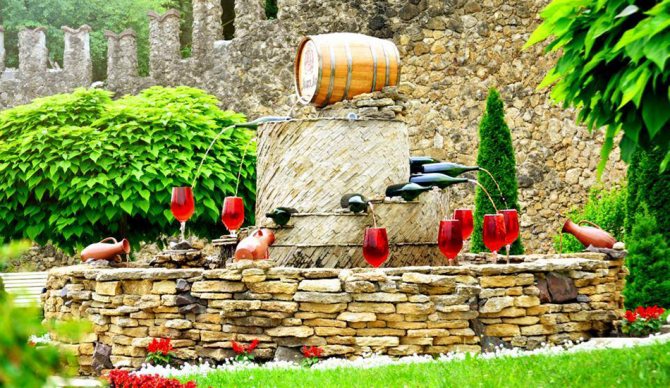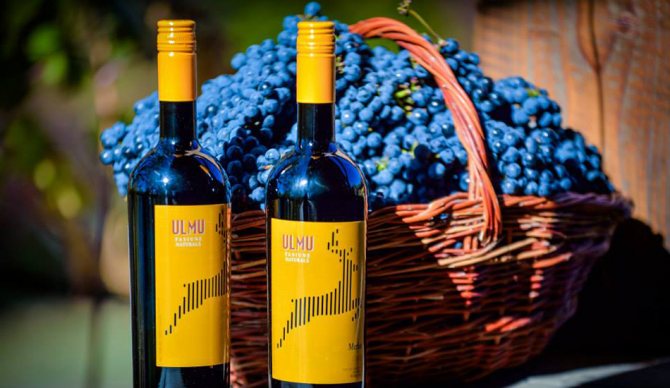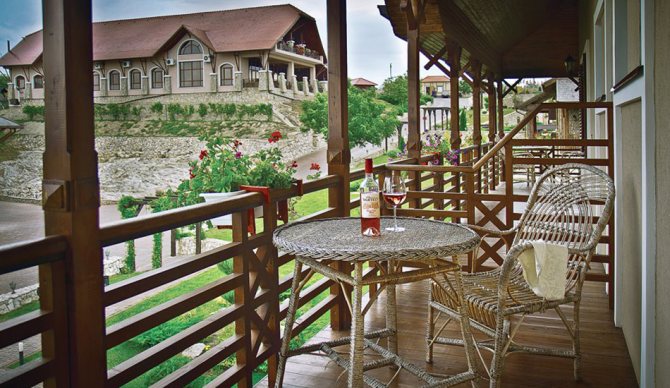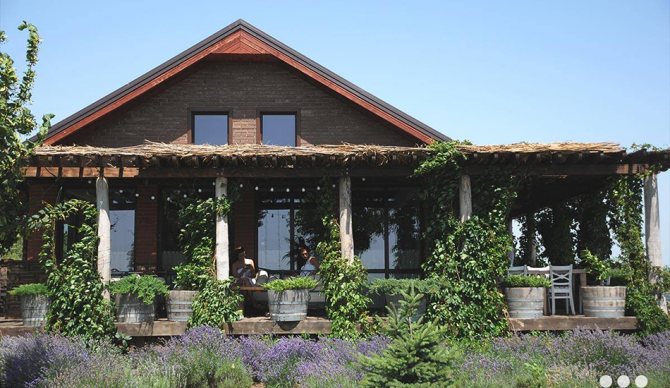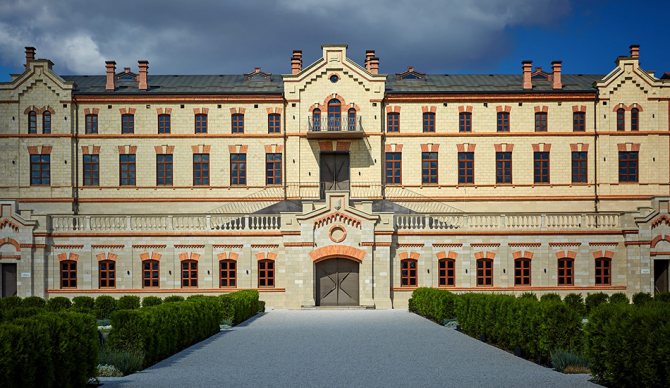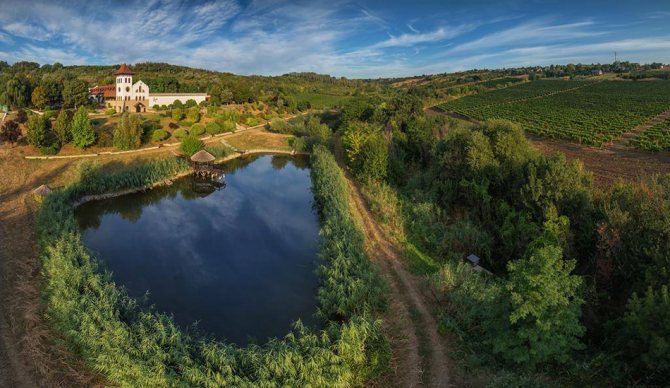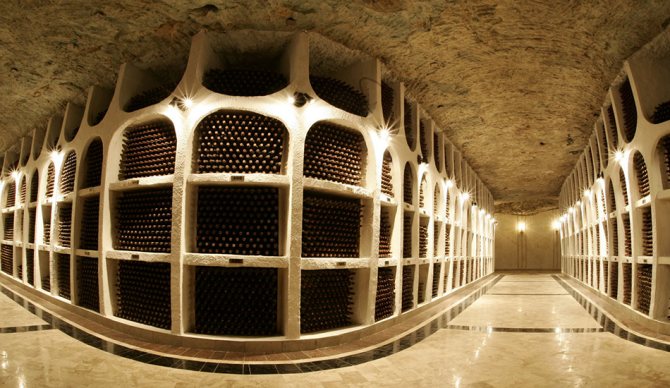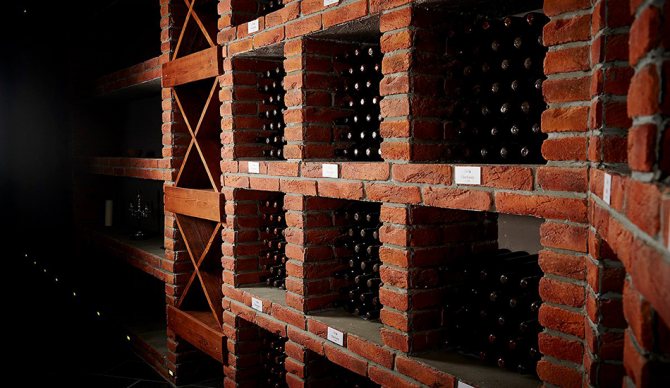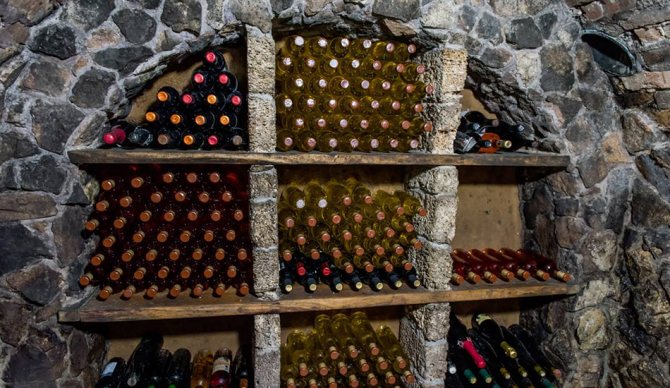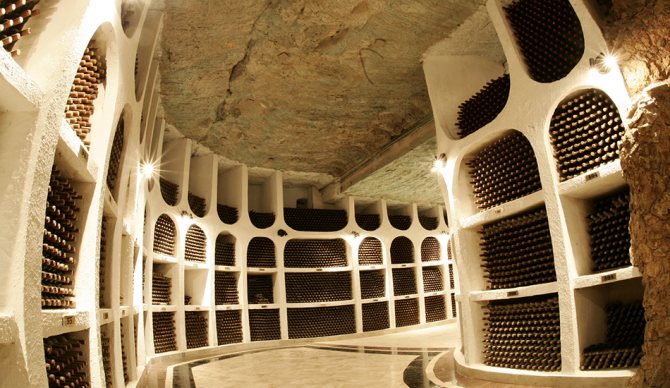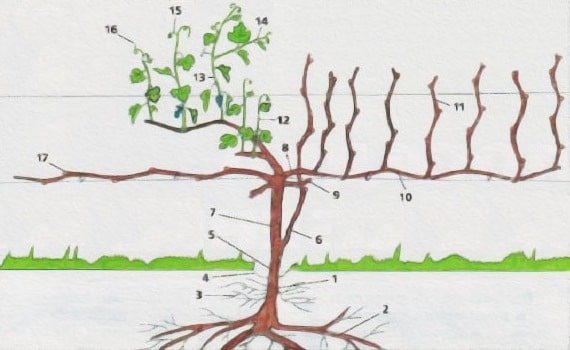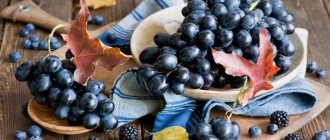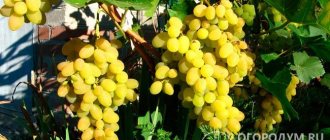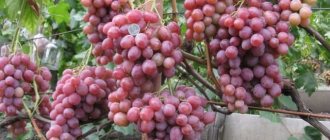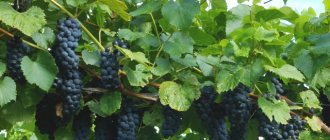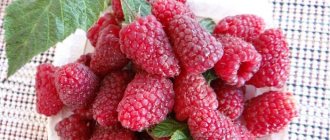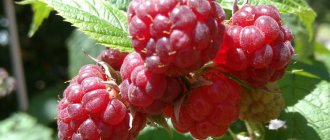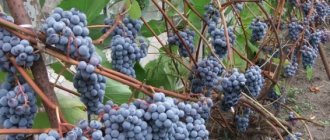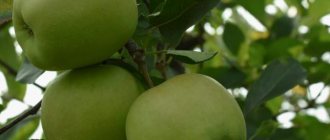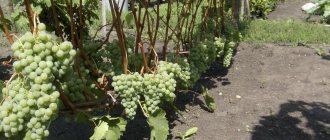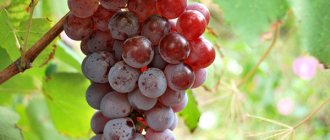Variety "Moldova" is familiar to almost all lovers of delicious bunches of grapes. It is distinguished by its unpretentious care and resistance to diseases, so it can give a good harvest even to beginners who decide to acquire their own vineyard. Although the Moldova grape variety is considered to be quite old, despite this detail, it does not lose its popularity among winegrowers.
- 2 Advantages and disadvantages
- 3 Planting cuttings
- 4 Watering and fertilizing
- 5 Pruning grapes
Grapes Moldova: description of the variety
The grapes are dark purple, oval, large, each weighing about 6-7 grams with a berry height of more than 2 cm.The small size of the bunches (from 300 grams to 1 kilogram) and the average density are fully compensated for by the sweet taste of fresh berries, estimated by a 10-point system by 8 points. Berries ripen at a slow pace due to the gradual accumulation of sugars in them. The flesh of the fruit is fleshy, with some gristle. There are from 2 to 4 seeds in berries. The dense skin is a little rough and covered with a waxy coating, which provides the variety with excellent transportability and high performance during long-term storage, which only improves the taste of the Moldova variety.
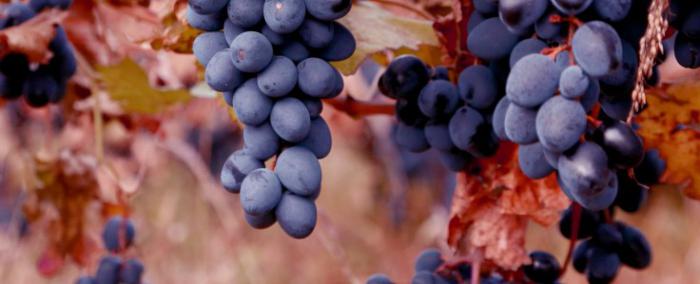
After ripening, grapes can be stored for a long time directly on the bush; however, with late breaking off of the bunches, its shelf life and transportation possibilities are significantly reduced. The taste of fresh berries is wonderful, the preservation is also delicious: compotes and jams.
External characteristics of the variety Moldova
The grape bushes Moldova are characterized by vigorous growth; the vine is brown, has a good ripening period. Grape flowers are bisexual. This means that the bush does not require additional planting of pollinating grape varieties. The leaves are large, rounded, slightly dissected, with raised edges. The underside of the leaf is somewhat pubescent.
The grapes of Moldova are most widespread in Crimea, Odessa and Kherson regions, Krasnodar Territory and Rostov Region.
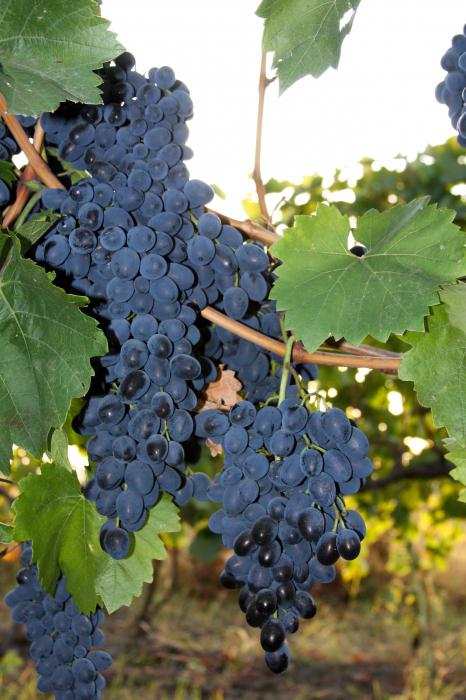

It is from the place of growth that the ripening period of grapes depends, the average of which is 155-165 days. In more northern regions, the harvest may not have time to ripen, which will give the berries a sour taste. The grapes of Moldova, consumer reviews of which are only positive, soon begin to bear fruit, the first harvest can be harvested in the 2-3rd year of life. The most active fruiting of grapes is concentrated above the base of the vine at 5-6 nodes. Subject to proper agricultural practices, the Moldova grape bush, 8-10 years after planting, is capable of producing 150 kg of excellent high-quality berries.
conclusions
The grapes of Moldova are not a new variety. Many growers practice its cultivation because it has its advantages:
- Unpretentious care. Calmly tolerates cultivation on rainfed lands, but the yield is much higher on irrigated lands. To get a high yield from a bush, it must be properly formed. Carry out pruning, garters, debris every year. And also there should be measures for the prevention of diseases in the care.
- Frost resistance. The bushes tolerate stress well, low winter temperatures.
- High productivity. For 8-10 years of growth, plants with proper agricultural technology are removed from 1 hectare to 2 tons of berries. From one bush - about 150 kg.
- Self-pollinated bushes.
- The berries are of good taste, keeping quality, transportable. Their use is universal, they do not harm the body.
Read about the propagation of grapes by cuttings in autumn in this material.
Advantages and disadvantages of the variety
Moldova is a grape that is not affected by phylloxera and is characterized by high rates of resistance to diseases such as gray rot and mildew. Late ripening of Moldova does not attract wasps to the bushes, which is another advantage of the variety. The disadvantages of the Moldova variety include a weak resistance to powdery mildew, so the bush needs to be treated with preventive drugs twice a season.
The grapes are frost-resistant, according to some statements, can withstand frosts down to - 26 ° C. In order to preserve the bush in the winter, it is still recommended to cover the variety Moldova. For this, the grapes must be placed completely on the ground and covered with hay or ordinary film. You can only cover the stem of the grape bush; a stalk just planted requires an obligatory shelter. Usually it is completely covered with earth and opens at the end of March. With a film tunnel shelter, the bushes should be opened by mid-April.
Properties for the body
The benefits of grapes for humans can hardly be overestimated. Berries are sources of fiber, fructose, glucose. Organic acids, such as oleic, stearic, linoleic, etc. It is a storehouse of vitamins C and group B. As well as antioxidants and enzymes useful for the human body, trace elements: potassium, bromine, iron, etc. Therefore, regularly consuming grapes in summer and autumn, you can improve your health.
Calorie content
Grapes are not a very high-calorie product. But this indicator depends on the variety. So, if yellow berries contain from 43 to 70 kcal per 100 grams of product, then purple and black ones contain more. About 72 kcal. Therefore, if someone decided to go on a diet, then it is better to eat yellow berries and green ones. But not raisins, the energy value of which is about 93 kcal. At the same time, caloric content is inversely proportional to acidity. The higher the acidity of the berry, the lower the calorie content. The energy value of Moldova grapes ranges from 73 kcal per 100 grams. This indicator can only be in fully ripe berries, which are removed from the bush in September.
One hundred grams of berries contain 17 g of carbohydrates, 0.6 g of protein, 0.2 g of fat.
Benefit and harm
Greek healers spoke about the benefits of grapes and its products. Possessing a complex of vitamins, microelements, berries contribute to:
- Improving the functioning of the digestive tract. But not if a person has high acidity with gastritis or a stomach ulcer;
- Improving hematopoiesis;
- Normalization of the cardiovascular system;
- Resorption of benign tumors;
- Increasing the level of immunity;
- Improving brain function.
Features of growing grapes Moldova
When growing grapes, one should take into account such a feature as the temperature difference during the day (day and night).
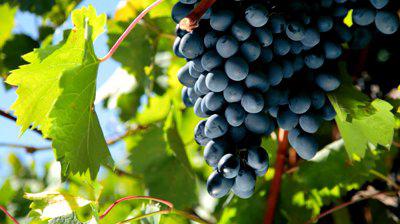

To preserve the stock of daytime heat and smooth out the difference between night and daytime temperatures, mulch under the bushes of the plant (black film or plant residues), form stone or brick hills under the racks and place containers with water in the vineyard.
Planting grapes Moldova
Growing grapes is not an easy job! This rather laborious process includes not only planting and grafting of the cuttings, but also the correct selection of the landing site and the preparation of the planting pit. Light, well-fertilized soil will be optimal for the bush; groundwater should be located no higher than 1.5 meters from the surface. The site for Moldova should be sunny and well sheltered from the winds.The Moldova grape variety is recommended to be planted horizontally, as well as near gazebos and canopies, on the south side. In this case, the bush will not thicken very much, and the berries will acquire the highest possible dimensional and taste characteristics.
The planting of Moldova grapes should be done in the spring, it is at this time that the bush will be able to take root as much as possible and acquire resistance to the coming frosts. An excellent crop can be grown from cuttings grafted in the fall.
Features of planting grapes
The main rule for planting in the spring and autumn is a stable temperature, which is kept at the level of 15 ° C. When planting grapes, one should take into account such qualities as strong growth and a tendency to thicken, which negatively affect the quality and size of the berries. The bush should be shaped with long sleeves, allowing room for growth. An acceptable planting pattern for this variety is 5 x 4 meters.
The planting of Moldova grapes can be done both on the old stock and on your own roots. It is recommended to keep the cuttings in water for some time until the roots appear white.
The bottom of the planting pit should be well fertilized with organic fertilizers mixed with the soil. When planting, it is important not to cover the root collar of the seedling with earth, leaving it above the surface.
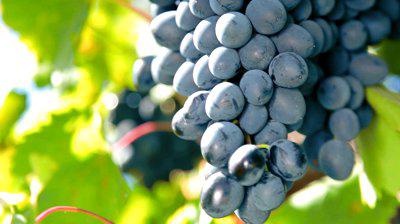

For grafting, the stalk should be cut wedge-shaped, stepping back from the lower eye a few millimeters, and placed in water for a day, and also dipped in a solution of "Humate" for a few seconds (10 drops of the drug per liter of water). It is required to graft the stalk into the split of the rootstock, which has been previously cleaned of dirt and serrations. The stem of the bush must be tightened tightly with a strong cloth, which will facilitate faster rooting of the cutting on this rootstock.
After planting, the cuttings must be watered abundantly, using at least 3 buckets of water per unit. A support should be dug in near the planted plant, which will guide the growth of the vine.
Reviews about the grapes "Molodova"
- Alena: a few years ago, when the winter was the most severe in recent years, our friends from Krasnodar brought a vine of grapes, which they only did not freeze over this winter! I planted it according to all the rules, but only after it had grown with me, I decided to learn more about this variety. It turns out that it bears fruit very late, even in the southern parts of our country.
- Evgeniy: I chose this variety, to be honest, by accident. I read on the Internet how to plant, cut off correctly .. After a while, it began to grow and bear fruit. Surprisingly, the homemade grapes turned out to be juicy and sweet, even my little fussy children appreciated.
Grapes Moldova: features of care
The grapes of Moldova, like any plant, need regular watering and feeding. Watering the shrub is required before and after flowering, as well as with a lack of moisture. The frequency of watering can be once a month or more frequent during periods of prolonged droughts. Excess water must be discharged into specially dug drainage ditches.
The growth and fruiting of grapes is qualitatively influenced by mulching, for which it is recommended to use stubborn humus, spreading it in a layer of 3-3.5 cm around a grape stem with a diameter of 1-1.5 meters. Mulching the soil is desirable in spring or autumn.
Pruning
Pruning of Moldova grapes is carried out annually, in early spring or late autumn, when the vine is dormant. The most active bush will bear fruit, having 3-4 sleeves and straightened vertically along the support.
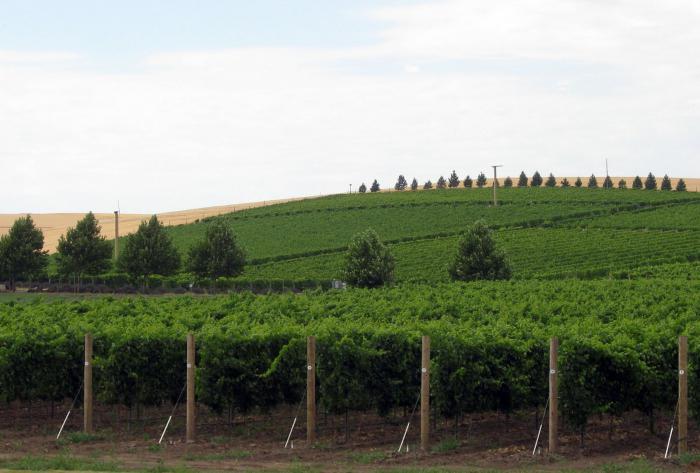

It is preferable to prune the vine by 7-9 eyes, leaving a total of about 70 eyes on the bush. When forming a bush with a high stem, trimming is required only by 4-6 eyes. It is important not to overload the bush, otherwise the berry will be small.To do this, in the spring, in parallel with the control of the number of shoots, one should monitor the number of clusters formed on them. The Moldova grape variety recovers well after pruning and damage.
Miraterra
Wine tours are considered one of the popular holiday destinations - excursions to numerous cellars with a fragrant intoxicating drink. The most convenient and acceptable option for such a trip is Moldova, where the wine tourism season begins in autumn. Guests can visit several wineries and the best wineries in the country, where they can taste the highest quality wines.
Moldovan wines are famous all over the world for their aroma, soft taste and sophistication. The vineyards sprawling on the hills provide an opportunity to make a wide range of wines - from white to ruby, from tulburel (cloudy) to crystal clear, from dry to semi-sweet and sweet. Old wines stored in wine cellars have long been the hallmark of Moldova.


From time immemorial, Moldova has been a country of winemaking and remains so at the present time. The wines produced in the Republic of Moldova are in demand internationally due to their quality. There are 144 wineries in the country, some of which have experience in receiving visitors. At such wineries, tourists are invited to get acquainted with the technology of wine production, see the wine bottling process and, of course, taste the final product.
General information
Moldova is a small country located in the southeast of Europe. Situated close to the Black Sea, in the area where winemaking originated, Moldova lies in the same latitudes as some of the best wine-growing areas in France. The rural landscape is highlighted by green hills and valleys. This land has grown grapes and produced wine for thousands of years, which is why wine plays a special role in the local culture. Moldovans note that their country is the only one that resembles a bunch of grapes in shape.
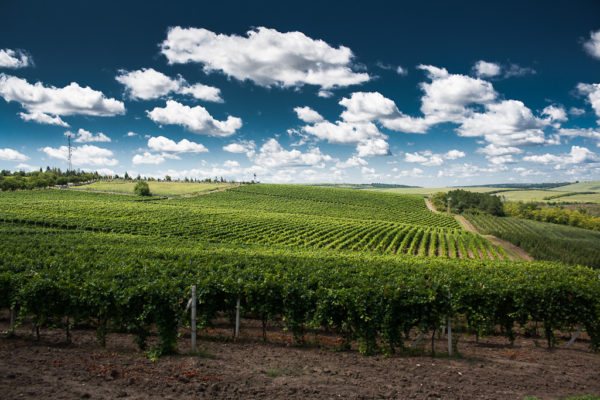

The wine industry plays an important role in the economy of Moldova. The republic is heavily dependent on wine, it is the backbone of the agricultural sector. Winemaking receives significant support from the Moldovan government, which sees it as a strategic sector, because 90-95% of wine is exported.
There are several types of wineries in Moldova that specialize in the production of sparkling, table wines and spirits. Approximately 40 wineries manufacture and export bottled wines.
History of Moldovan winemaking
Viticulture and winemaking on the territory of Moldova emerged about 5 thousand years ago, when the Dacians learned how to make wine from grapes. Winemaking moved forward when Greek settlers who arrived on the Black Sea coast towards the end of the third century BC brought the traditions of winemaking with them and told them to the local population. During the prosperous periods of the Roman Empire in this area, 100 AD, winemaking flourished.
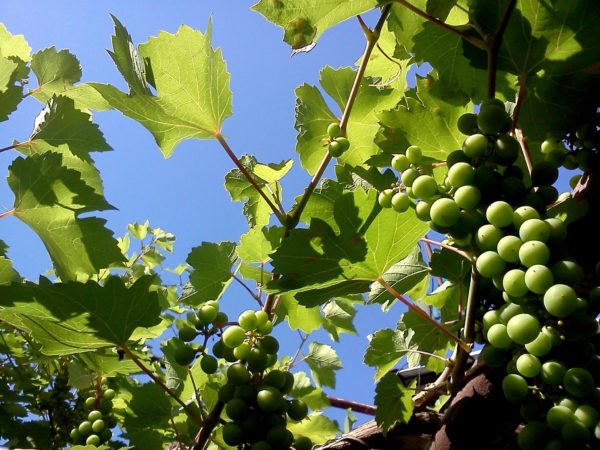

With the formation of the Moldovan feudal state in the 14th century, viticulture began to develop actively. It flourished in the 15th century, during the reign of Stefan cel Mare (Stefan the Great), who imported new grape varieties and interested in the production of high-quality wine, inventing the position of "plowman" (cupbearer), whose duties were to control the vineyards and winemakers to achieve high quality wine production. His power also gave an additional impetus to winemaking by increasing the area under grapes, modernizing technology and organizing home cellars.
At the beginning of the 16th century, the area came under the control of the Ottoman Empire, where winemaking was banned.Over the next 300 years, winemaking experienced a significant decline.
In 1812, after the Treaty of Bucharest, when the region became part of the Russian Empire, the fate of wine changed. Russian nobles bought wine estates and began to breed mainly local varieties, such as Plavai, Rara Neagra, Zgihard, Galbena, Batuta Neagra, Feteaska Neagra, Feteaska Alba and others.
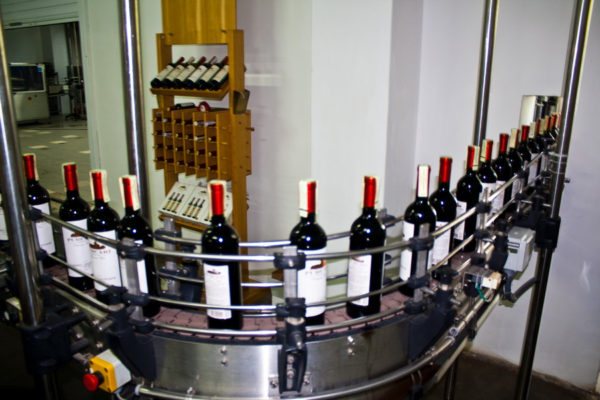

In the second half of the 19th century, French grape varieties began to be imported, which is why there are so many noble grape varieties in Moldova today. At the same time, famous regions such as Purcari arose in the country. Winemaking began to flourish, and by 1837 Moldova was producing over 10 million liters of wine per year.
Another setback overtook winemaking at the end of the 19th century, when an outbreak of phylloxera destroyed many vineyards. But by 1906 the vineyards were renewed and grafted with planting material. By 1914, the largest number of vineyards in the entire Russian Empire grew in Bessarabia (the territory of Moldova between the Prut and Dniester).
World Wars I and II left their mark on the vineyards of the region: many of them were broken, winemaking suffered. Until the end of World War II, vineyards in Moldova were not restored. They were revived only as a result of large-scale transplants in 1950. By 1960, the total area of vineyards was 220 thousand hectares. Over the next twenty years, Moldova became the main wine-making republic in the USSR. Every second bottle of wine and every third bottle of sparkling wine was made in Moldova.
In the mid-1980s, wine production suffered another blow, this time with the ban on alcohol in the USSR. The vines were cut down on a large scale, the wines were destroyed. This has become a national tragedy for Moldova.
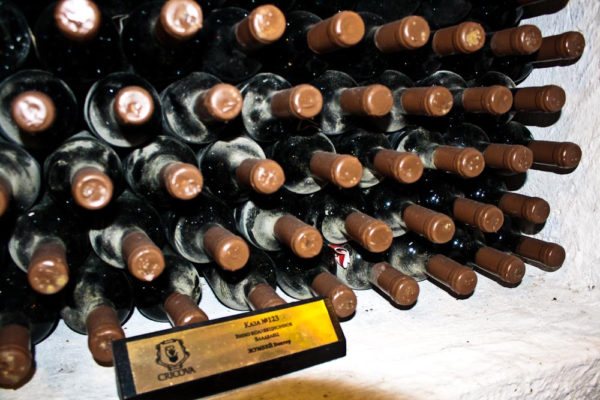

After Moldova became independent in 1991, the wine industry began its slow and difficult recovery. By the mid-1990s, many wineries were privatized and new owners began investing in modern equipment. A significant investment in the vineyards was made in 2000-2005, when many winery owners decided to plant European clones of popular varieties. At this time, many grape nurseries were established to sell local rootstocks in combination with European planting material.
In recent years, winemaking in Moldova has continued to develop. Many wineries began to collaborate with winemakers from countries such as France, Italy, Australia and New Zealand. They work with local winemakers to share their knowledge of modern winemaking techniques, including those needed to produce young, fruity wines that are in demand around the world. Moldovan winemakers quickly adopted these methods and mixed them with traditional winemaking methods that are typical for Moldova.
Wineries of Moldova
Chateau vartely located in the center of Moldova, near the city of Orhei. This is one of the newest wineries in the country. Winery Vartely offers a wide range of wines. Winery tours can also be arranged.


This winery has several tasting rooms where visitors can taste Vartely wines as well as wines from famous wine regions of the world. There is a restaurant with a capacity of over 250 people. Vartely also has a small hotel complex with luxurious rooms.
There is a wine and souvenir shop on the territory of the winery. Tours and tastings must be booked in advance, although reservations are not required for small groups.
Purcari is the oldest wine-making estate in Moldova, which was founded in 1827. This winery has a long and interesting history of producing some of Moldova's most famous wines such as Negru de Purcari and Rochu de Purcari.It is located in the southeast of Moldova in the village. Purcari in the Stefan Voda district, one of the most elite wine-producing regions in the country.
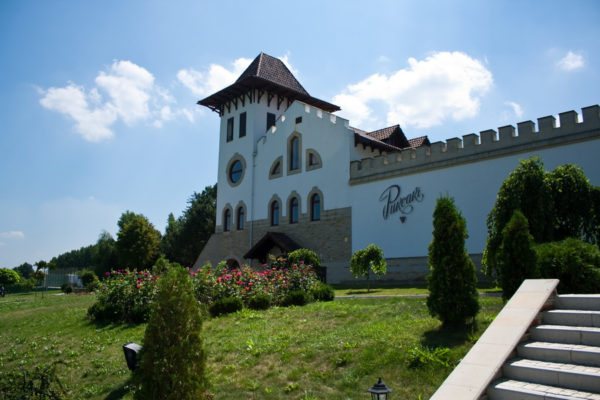

Microzone Purcari is known for its drained soils, which are rich in calcium and an excellent climate due to its proximity to the Black Sea, which creates the best conditions for the production of wines, especially reds. In 2003, Purcari was bought by its current owners and completely remodeled and improved the facility to preserve the winery's heritage.
Winery Purcari produces a wide range of wines. It offers guided tours and wine tastings. The tasting of the drink takes place in the main hall of a completely renovated building, which is made in a castle style. The winery restaurant offers national and French cuisine. Also in Purcara there are hotel rooms, a small wine and souvenir shop.
Milestii Mici is the largest underground wine cellar in Moldova. It contains over 200 km of limestone tunnels, 55 km of which are used for storing wine. The depth of the tunnel ranges from 30 to 85 m underground.
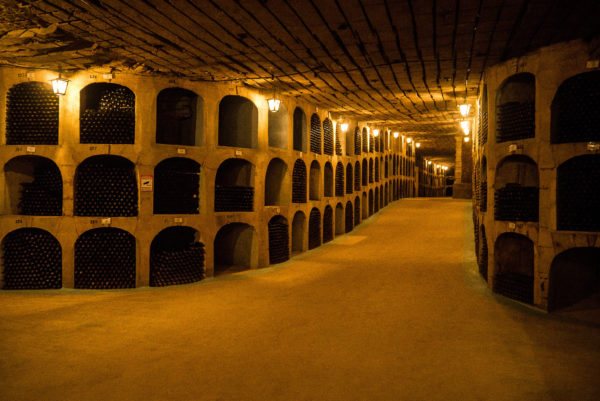

The tunnels were made by removing blocks of limestone for the construction of Chisinau. In 1969, the tunnels were converted into an underground wine cellar. Natural limestone helps to maintain a constant temperature of 12-14 degrees and a humidity of 97-98%, which makes the conditions optimal for storing wine. Many wines are stored in large oak barrels, which are made of Crimean or Krasnodar oak, ranging in size from 600 to 2000 decaliters. The tunnels were named after the wines that are stored there.
The cellar contains a huge collection of wines, which consists of over 2 million bottles, which is the largest collection in the world according to the Guinness Book of Records. Over 70% of stored wine is red, 20% is white and 10% is dessert wines. The Milesti Golden Wine Collection has been keeping wines since 1969 and is the pride of the cellar. The most valuable of this collection was made in 1973-1974, currently they are exported only to Japan. The wines stored here are made from grapes that have been harvested in different years, starting in 1969. The wine was made according to old traditions. The winery now produces wine according to the latest modern standards.
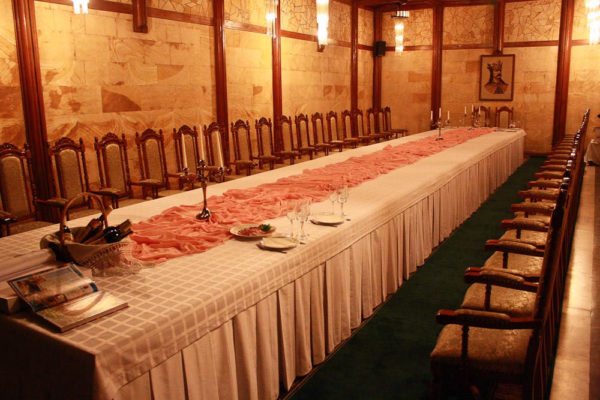

In the center of the wine cellar there is a restaurant and a tasting complex. The tasting rooms are luxuriously decorated. The walls are made of natural shell rock and are expertly illuminated. There are also aquariums, sculptures and beautiful stained glass windows in the basement. Here visitors can taste the wine assortment. The winery produces dry, semi-dry and sweet wines. Depending on the tour chosen, the tasting may include old collection wines, young red and white wines, and sparkling wines.
Winery Cojusna located in with. Cozhusna district Straseni, which is 15 km from Chisinau. It produces over 10 types of wines and has underground cellars, which currently store 250,000 bottles of vintage wines.
The collection includes interesting dessert wines such as Jerez bottled in 1982, Marsala 1978 and White Muscat 1978, which were deposited in 1982. These wines surprise with their beautiful dark amber color, obtained due to maturation in the bottle and delicate sweet taste.
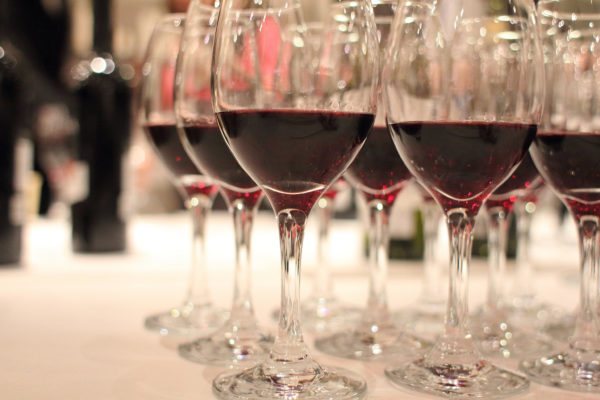

Guests can taste wine from a bottle with history - from Cabernet Sauvignon (1987), Jerez (1979), Riesling (1979) and Port (1979). Those interested can taste wines with Moldovan cuisine, which are made from local and seasonal products. Visitors can choose from a traditional "stone" tasting room, which is decorated in a traditional style, or a modern "European white room".
Et Cetera Is a family-owned winery that makes high quality wines and has a good reputation in Moldova. The winery is owned by two brothers - Alexander and Igor Lukyanov.They conceived the creation of their vineyards in 2003 in the village of Crokmaz, Stefan Voda region, in the Purcari microzone, where the best climatic conditions for growing grapes.
The winery was built in 2009 and is surrounded by 50 hectares of vineyards. It is located 130 km from Chisinau. In addition to classic grape varieties such as Chardonnay, Merlot, Traminer and Cabernet Sauvignon, in 2009 Syrah, Petit Verdot, Negro Amaro, Albaroso, Malbec, Marcelane were planted here, and in 2011 the vineyards were enlarged with the help of Feteasca Alba, Feteasca Neagra, Rara Neagra, Feteasca Regale and Saperavi. The winery produces no more than 10 thousand bottles of each variety per year.


A visit to this winery is a unique opportunity to experience Moldovan winemaking on a small scale. A typical tour consists of a visit to the vineyards and winery, including a grape processing workshop, a wine aging workshop and a bottling line. The tour includes tasting of five types of wines and light snacks. Tastings can be held in a vineyard or winery, where visitors can sample the wine straight from the barrel.
Cricova is a national value and one of the famous wineries in Moldova. It is the second largest underground wine cellar after Milesti Mici.
The winery has almost 120 km of underground tunnels, which are quite large, which makes it possible to drive by car. Their deepest location is 100 m below ground level. The tunnels appeared when limestone blocks were removed from the ground for the construction of Chisinau. In 1950, the underground corridors were converted into a wine cellar.
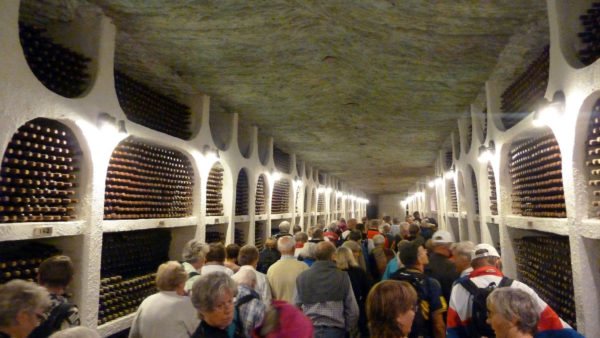

Cricova has a significant collection of over one million vintage wines. There is also a collection of rare and unique wines, some of which belong to famous people.
In the center of the basement are decorated themed banquet and tasting rooms. Visitors can taste exquisite white, rosé and red wines, old collectibles and sparkling sunny drinks. Cricova is the largest producer of sparkling wines in Moldova using the traditional method of champagne.
Moldova is an excellent tourist destination. This country is especially popular in autumn, when the wine tourism season begins. During the wine tour, you can visit famous wineries and taste a drink. Such an excursion will help tourists understand the technology of wine production, and if they manage to get to know the winemakers personally, who will tell about the age-old traditions of wine production.
Last revised: 12.12.2017
Did you like the article? Don't forget to share!
Pinching and breaking off
In addition to pruning, weak and overgrown shoots should be removed by breaking them off, which is done after the appearance of antennae and inflorescences, always until the shoot becomes lignified at the base. Breaking off begins at the bottom, followed by a gradual transition to the sleeves of the bush. For the subsequent renewal of the plant, it is recommended to leave some of the strong shoots.
A couple of days before flowering, it is recommended to pinch (remove the tops of the green shoot), which does not allow the grapes to stretch in length. This operation is aimed at redirecting the nutrient flow to the inflorescences.
Top dressing of a grape bush can be done with mineral and potassium-phosphorus fertilizers, which are introduced into the ground when it is dug up.
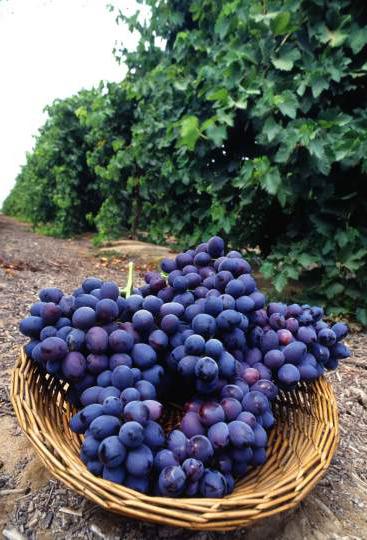

2-3 weeks before the ripening of the fragrant bunches, the leaves covering them should be pinched off. This will ensure faster pouring of the berries and an increase in their sugar content. It is recommended to remove no more than 5 leaves from each bunch in order to avoid disruption of the nutritional process.
The grapes of Moldova, the care of which is painstaking and troublesome, subject to the correct application of agrotechnical measures, will fully delight the consumer with a high-quality and tasty harvest.
How to prune grapes in summer
When pruning a grape bush in the summer, several simple manipulations are performed:
- Stealing.
- Chasing.
- Thinning.
Before moving on to considering these types of pruning, let's highlight the main components of a grape bush:
| 1 - underground stem (trunk). |
| 2 - heel roots (main roots). | |
| 3 - middle (lateral) roots. | |
| 4 - dew (surface) roots. | |
| 5 - the head of the bush. | |
| 6 - coppice shoot (top shoot, top). | |
| 7 - overhead bole (head). | |
| 8 - horn (two-year-old vine). | |
| 9 - replacement knot. | |
| 10 - fruit arrow (fruiting arrow). | |
| 11 is an annual vine. | |
| 12 - green barren shoot. | |
| 13 - green fruitful shoot. | |
| 14 - stepson. | |
| 15 - shoot crown. | |
| 16 - kidneys. | |
| 17 - eyes. |
The stepson is a one-year growth from the axils of the shoot leaf, which is a kind of reserve for the development of the shoot. As well as on shoots, stepchildren of the second order can develop on stepchildren, and so on. Fruit buds can form on stepchildren, so you can get a stepchildren's harvest on them. Such a crop often does not have time to ripen before frost and the bunches are never full-bodied. Stepsons weaken the bush by taking nutrients and shading the ovaries. The essence of pinching is to let the shoot grow a little, and then cut it off, leaving 1 - 2 lower leaves on each stepchild.
The purpose of the minting is to redirect nutrients to strengthen the bush and ripen the bunches. In this case, the tops of the shoots (crowns) break off by 15 - 20 cm. It is not recommended to emboss on diseased bushes, as well as on bushes growing in conditions with a close occurrence of groundwater. In a dry season, it is also not worth striking grapes.
Periodic thinning of the vineyard is carried out after flowering. On the bushes, it is necessary to cut off 5-10 leaves from the bottom of the shoots on which the bunches grow.

